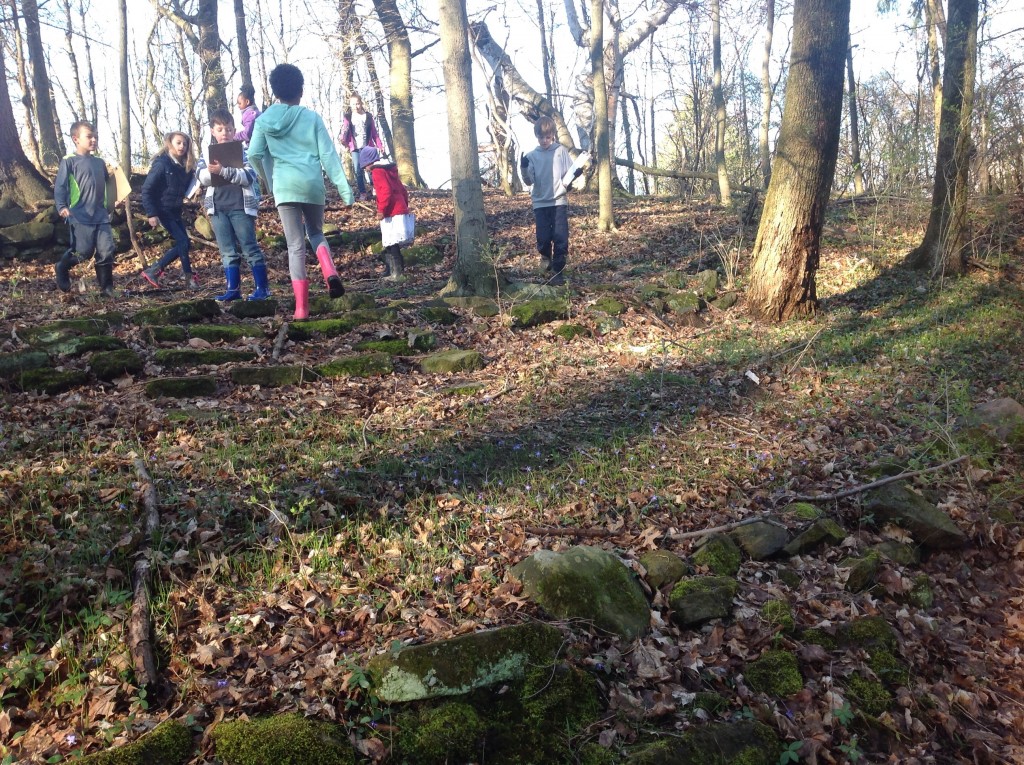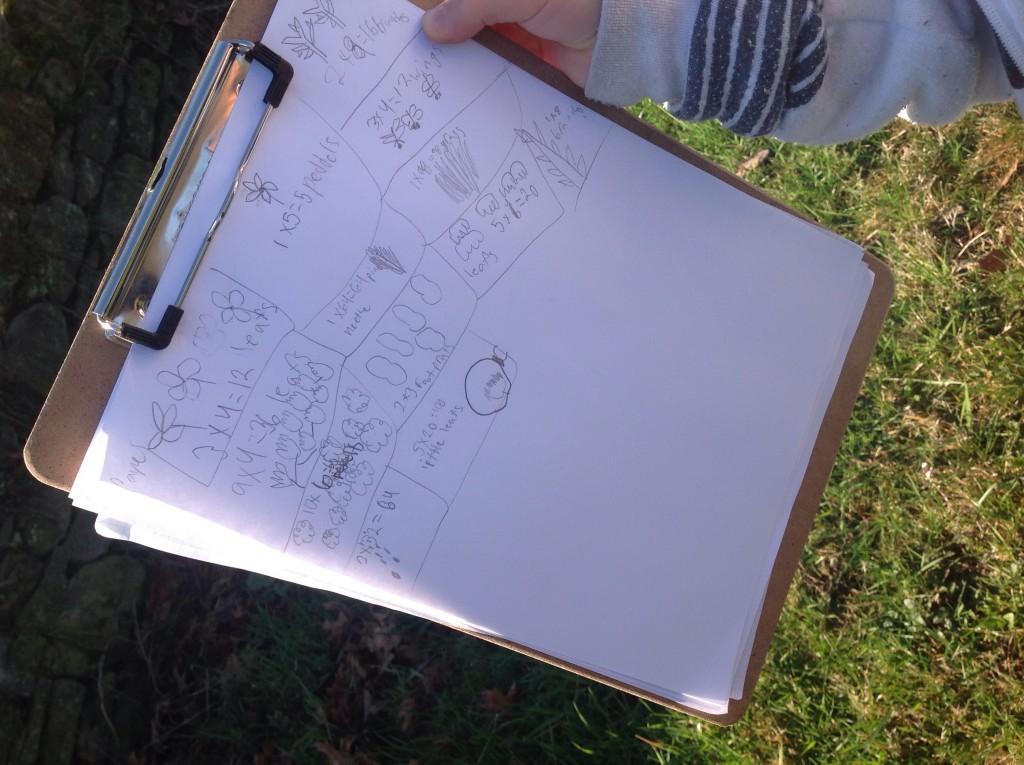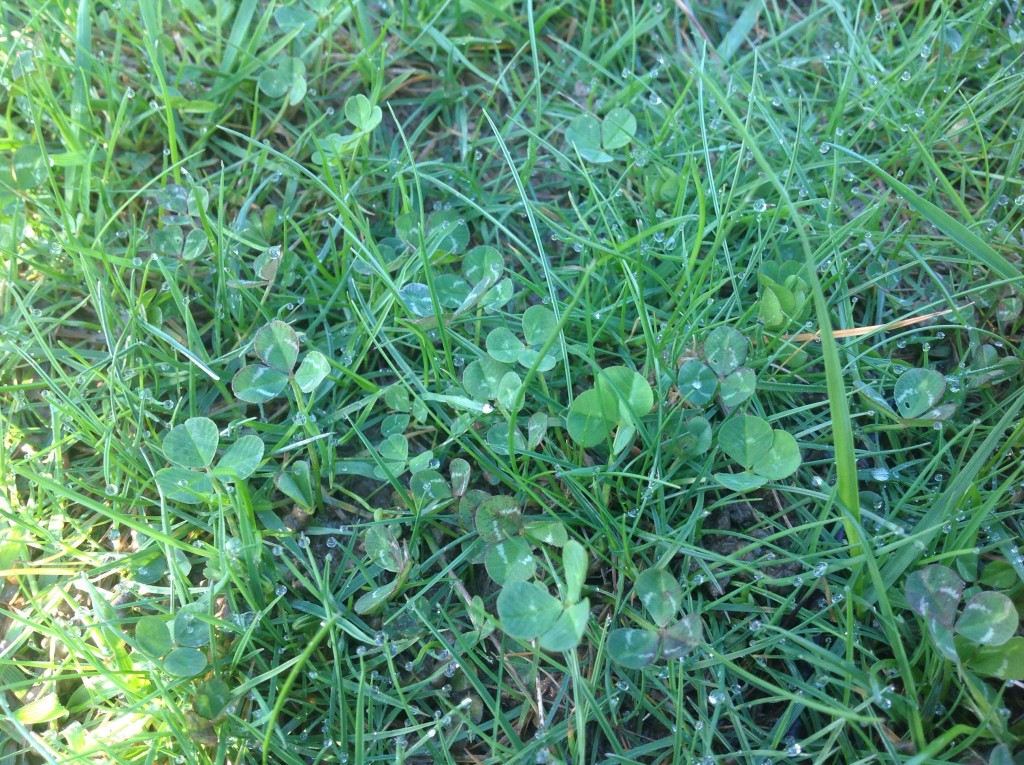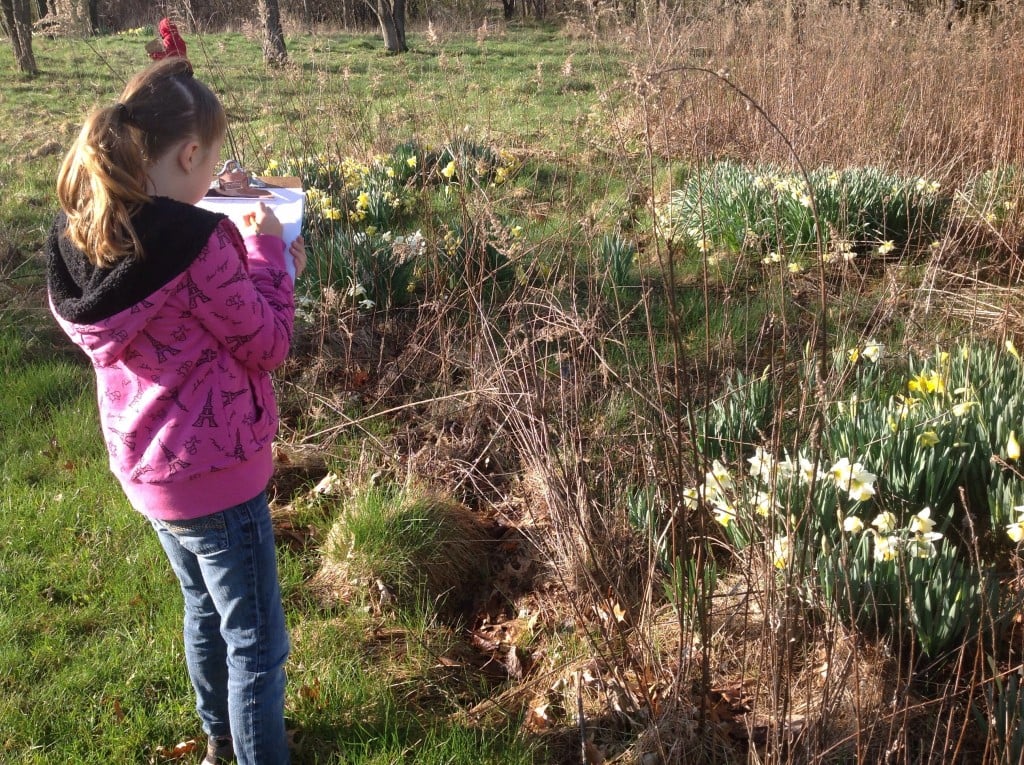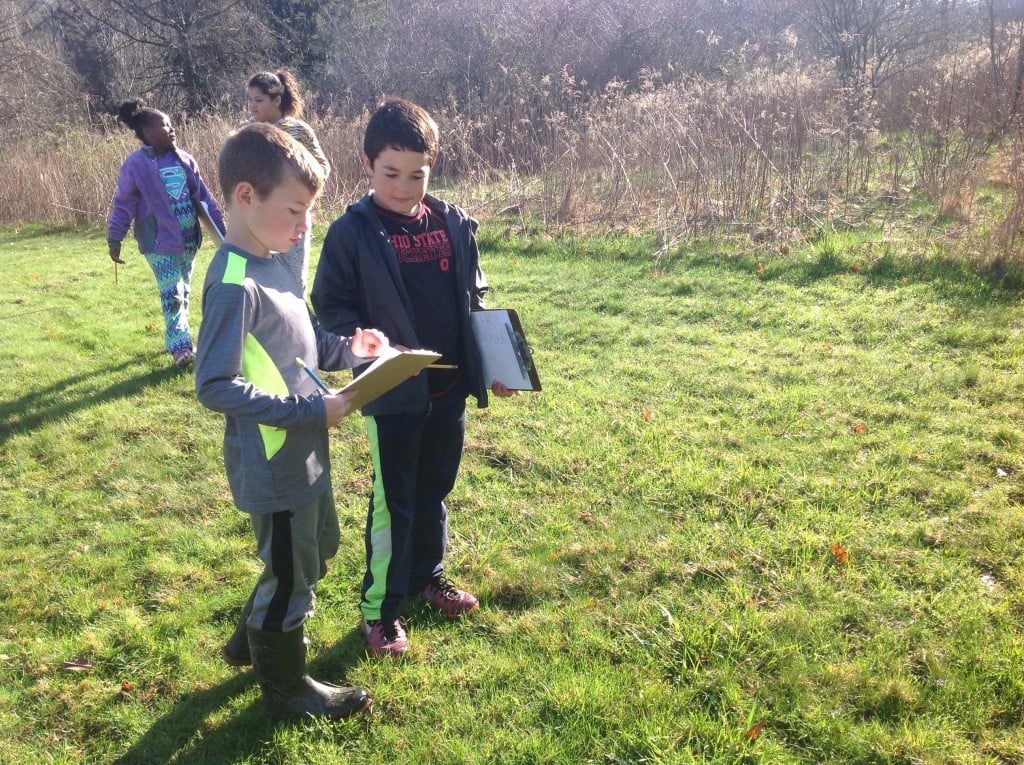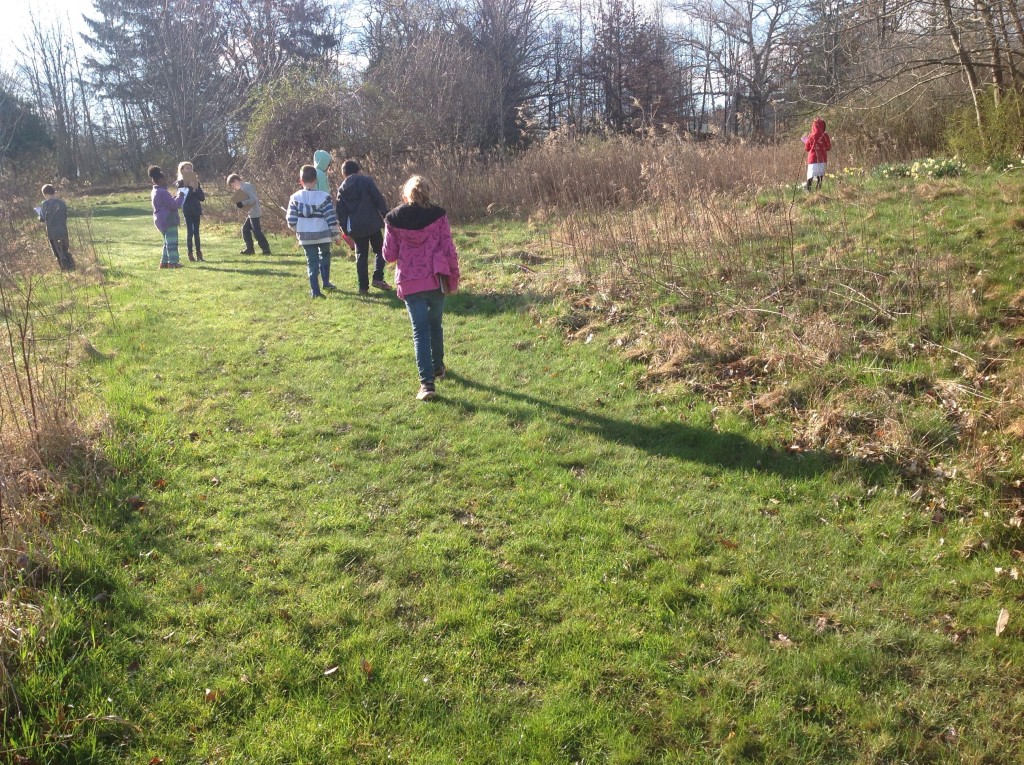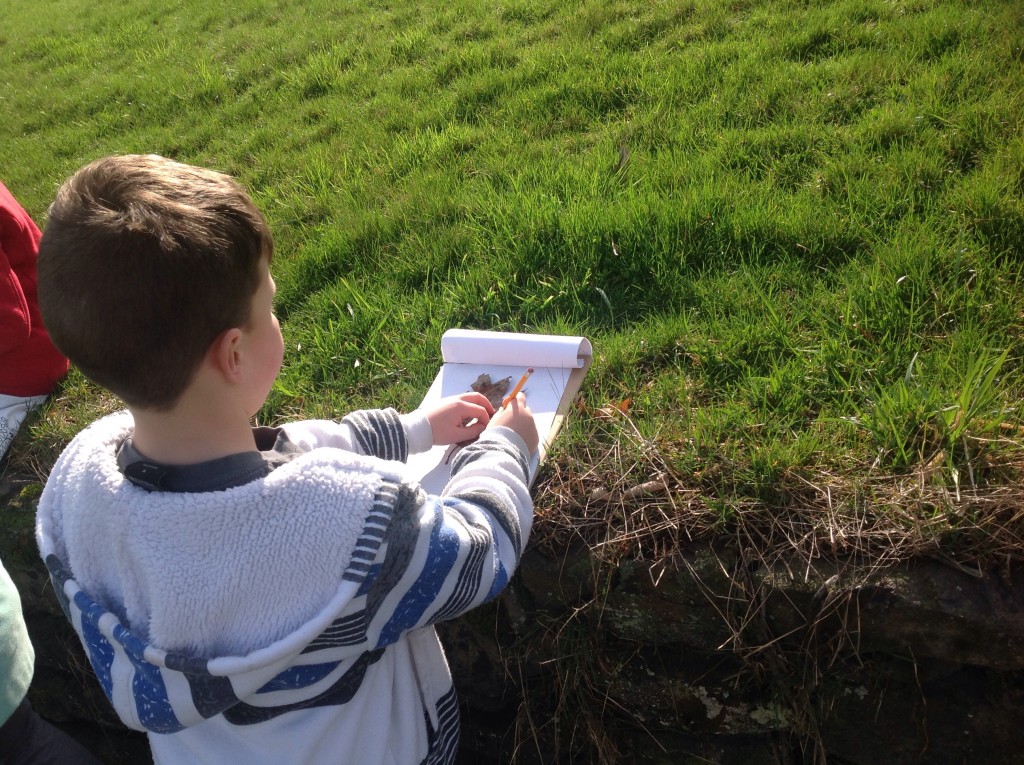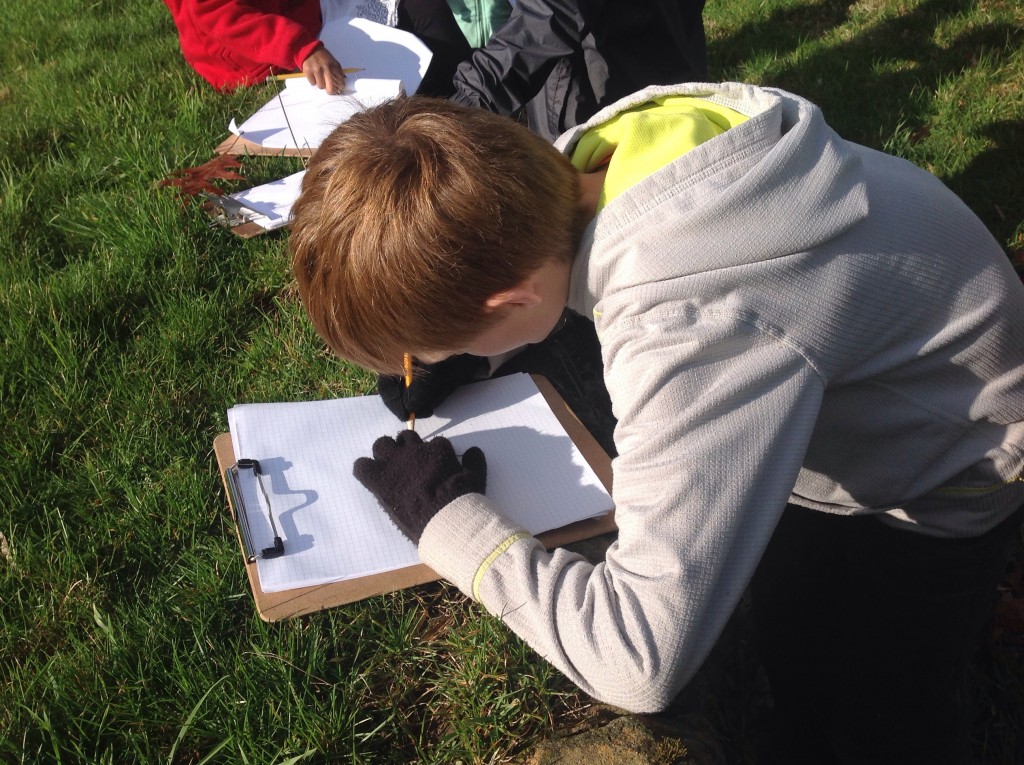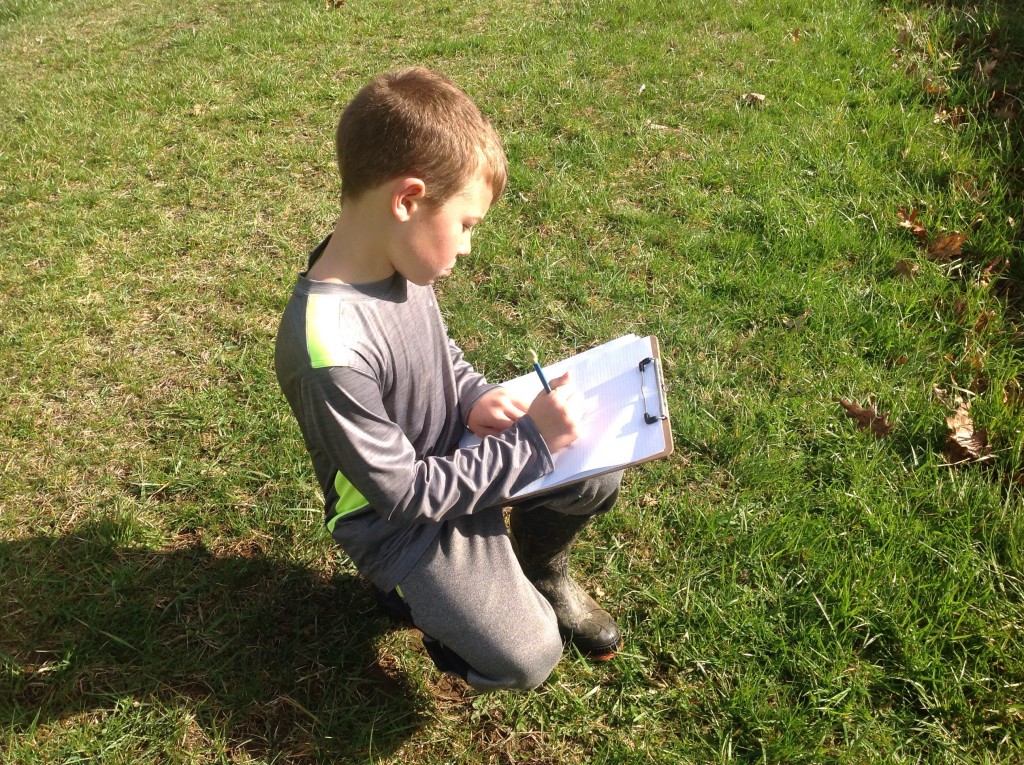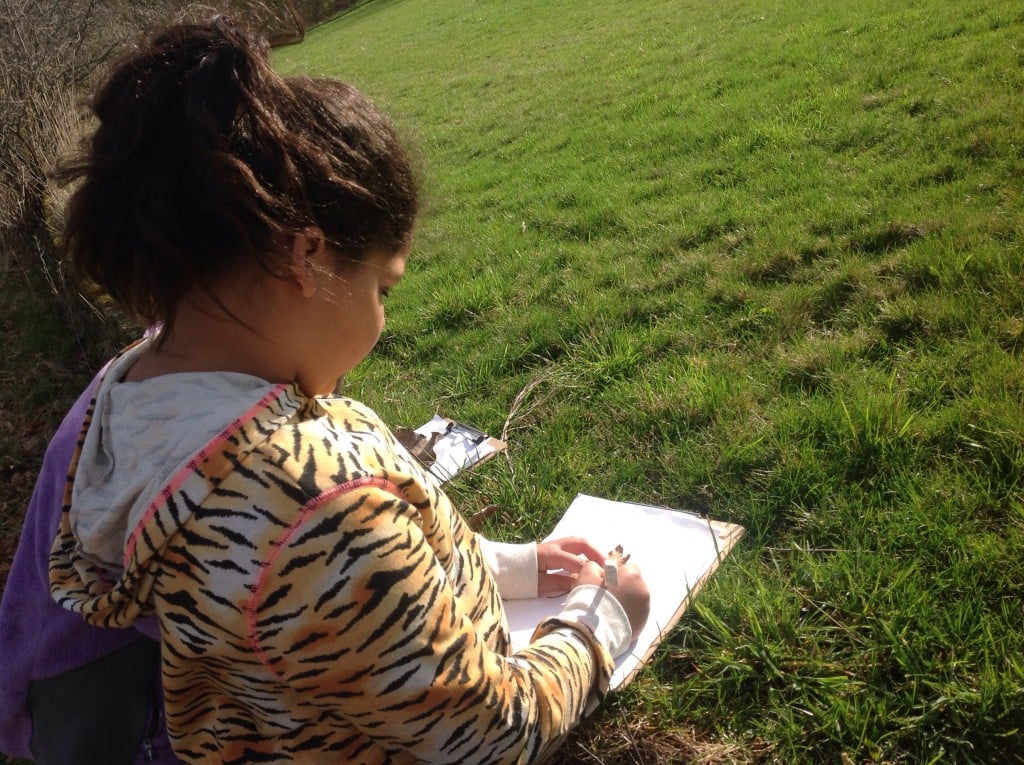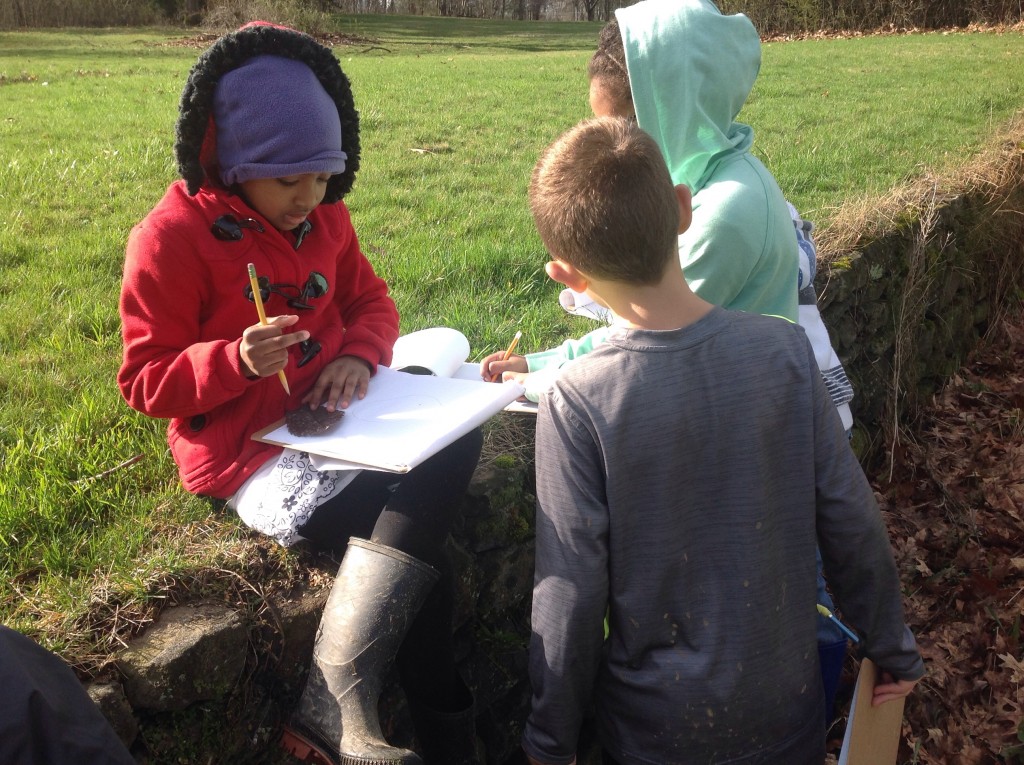Third grade practiced their multiplication facts by finding groups in nature. For example, a student might have found 6 sets of three-leaf clovers, which would be 6×3=18 petals. It is important that students are able to understand math concepts outside of a textbook.
Later, students found an interesting leaf and found its approximate area. They solved this by tracing their leaf on graph paper and counting the number of squares inside their tracing. Because leaves are not perfect rectangles, they used their knowledge of fractions to account for the incomplete squares.
Before heading outside, we reflected on the last math class we had outside and determined that we needed to work on organizing the data we collect (one of our research skills). Sharing our work afterwards was much easier this time. : ) Great job, third grade! 